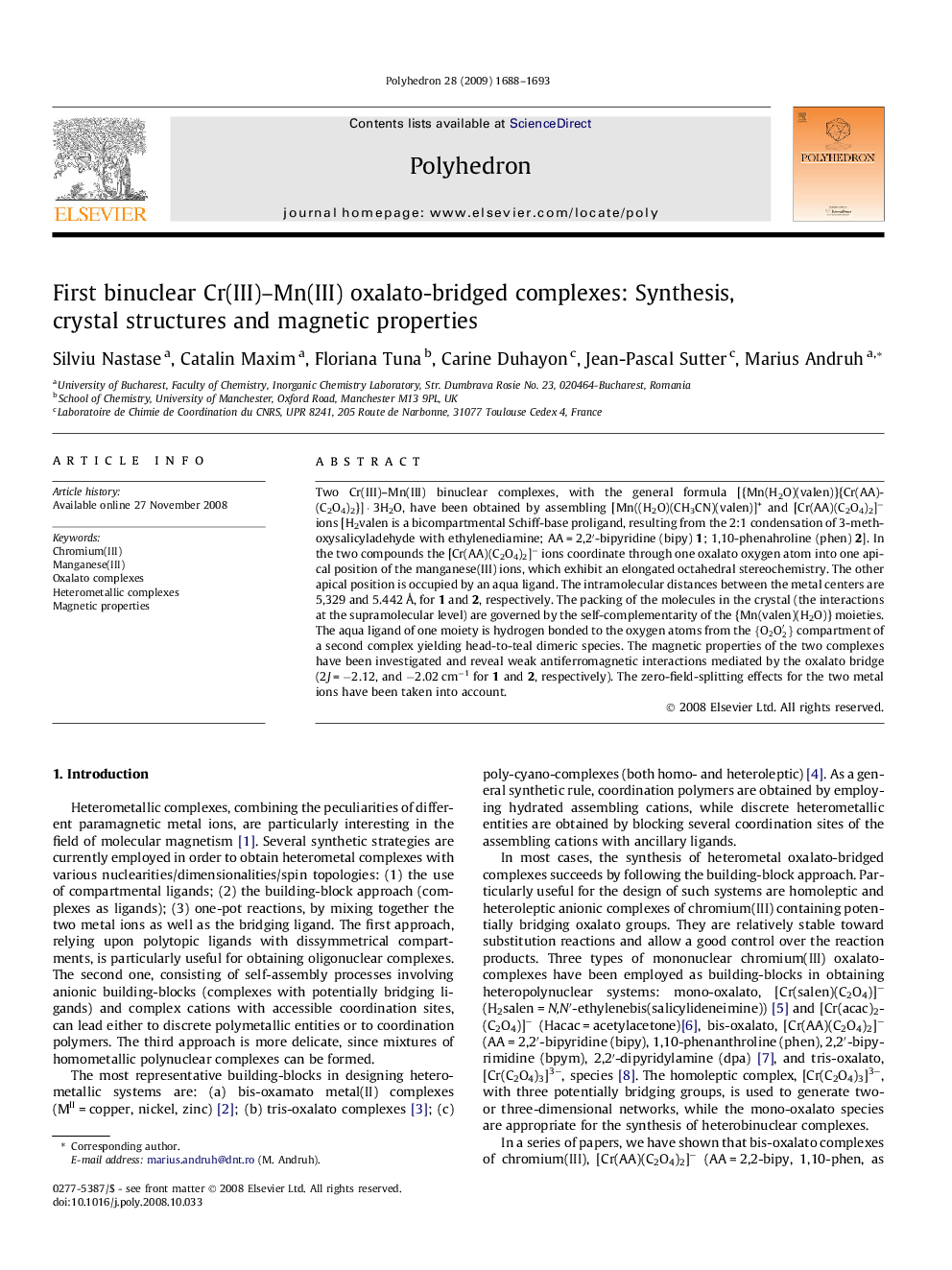| Article ID | Journal | Published Year | Pages | File Type |
|---|---|---|---|---|
| 1339908 | Polyhedron | 2009 | 6 Pages |
Two Cr(III)–Mn(III) binuclear complexes, with the general formula [{Mn(H2O)(valen)}{Cr(AA)(C2O4)2}] · 3H2O, have been obtained by assembling [Mn((H2O)(CH3CN)(valen)]+ and [Cr(AA)(C2O4)2]− ions [H2valen is a bicompartmental Schiff-base proligand, resulting from the 2:1 condensation of 3-methoxysalicyladehyde with ethylenediamine; AA = 2,2′-bipyridine (bipy) 1; 1,10-phenahroline (phen) 2]. In the two compounds the [Cr(AA)(C2O4)2]− ions coordinate through one oxalato oxygen atom into one apical position of the manganese(III) ions, which exhibit an elongated octahedral stereochemistry. The other apical position is occupied by an aqua ligand. The intramolecular distances between the metal centers are 5,329 and 5.442 Å, for 1 and 2, respectively. The packing of the molecules in the crystal (the interactions at the supramolecular level) are governed by the self-complementarity of the {Mn(valen)(H2O)} moieties. The aqua ligand of one moiety is hydrogen bonded to the oxygen atoms from the {O2O2′} compartment of a second complex yielding head-to-teal dimeric species. The magnetic properties of the two complexes have been investigated and reveal weak antiferromagnetic interactions mediated by the oxalato bridge (2J = −2.12, and −2.02 cm−1 for 1 and 2, respectively). The zero-field-splitting effects for the two metal ions have been taken into account.
Graphical abstractTwo Cr(III)–Mn(III) binuclear complexes, with the general formula [{Mn(H2O)(valen)}{Cr(AA)(C2O4)2}] · 3H2O, have been obtained by assembling [Mn((H2O)(CH3CN)(valen)]+ and [Cr(AA)(C2O4)2]− ions.Figure optionsDownload full-size imageDownload as PowerPoint slide
